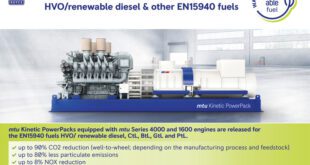It is pretty amazing how much of a significant difference wind turbines can have, of course you have to think about certain factors.
Changing wind power into electrical energy is actually the purpose of wind generators. If you envision a plane propeller sitting on top of a tall tower, this is exactly what a turbine looks like. When the wind blows the generator the blades make the rotor spin and the movement of the rotor causes the power generator within the turbine produce power. As with most kinds of power generators, magnets and copper wires are arranged to create a charge any time the rotor spins. This system has been made use of for quite a while in some other forms of generators.
Obviously for the turbine to operate there will have to be wind. The average height for wind generators is usually 30 meters, which enables them to utilize the more powerful winds that happen at that height. This height allows the rotor to receive more exposure to the wind and therefore create far more electricity. Of course it’s understandable that without enough wind, no power will be made. This is precisely why extensive research is done on areas for potential wind generators to make certain that there’s enough wind to create energy. Many coastal places are ideal thanks to reliable high winds. Consistent winds does not always mean that they always blow from the same exact direction. To adapt to varying wind directions, the turbines are fashioned to continually face into the wind, irregardless of direction.
I hope that what you have learned thus far involving wind power, as well as also the info regarding alternative energy, is useful to you. Now read on some more to have added info for these subjects.
Because of their efficient design, turbines can produce a lot of power that can be implemented for domestic or commercial applications. You can also place the electricity into batteries for when there is no wind. Due to the high initial investment, which will call for many years to recover, wind turbines require a long-term perspective. Unlike various other green energy methods, wind generators will continue to work 24/7, providing there’s wind. In places that experience quite a few hours of darkness during some months, turbines may be a much better green solution as compared to solar panels. Another great thing about wind turbines is that they are eco-friendly as they produce absolutely no pollution. The standard sources of hydro, such as nuclear reactors, create significant pollution that could be reduced by turbines. Another advantage is that turbines are harvesting energy from a continuously renewing source. There’s no danger of turbines not having enough propulsion.
Let’s consider what some may refer to as the cons of wind turbine produced electricity. Their height makes them stand out, and some say they’re unattractive for this reason. Large installations, with a bunch, or even hundreds grouped together, produce visual pollution in coastal areas, according to critics. Like any mechanical device that moves, they may be quite noisy. Another major issue that people have mentioned is that birds and bats (bats especially) tend to fly into them. The justification stated for bats soaring into wind generators is that the motion in the air disrupts their ability to hear and see with sonar. There are no figures on how regularly this happens, nonetheless.
The overall positive aspects of wind turbines seem to over-shadow the disadvantages at the moment. Wind turbines offer great promise for generating clean, renewable and safe energy, with few serious downsides.
 Alternative Energy HQ solar power for homes, wind energy, and bio fuel issues
Alternative Energy HQ solar power for homes, wind energy, and bio fuel issues






